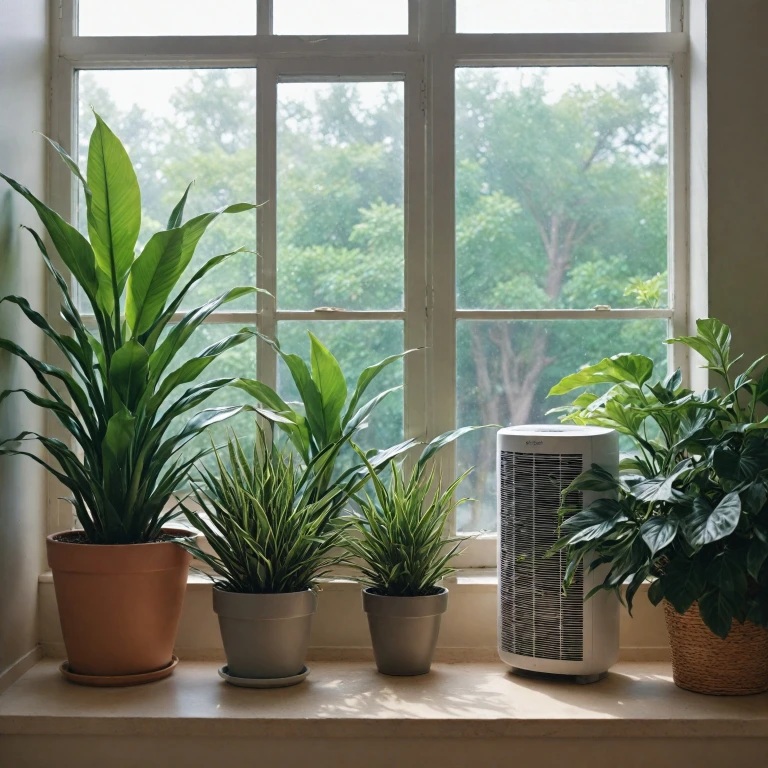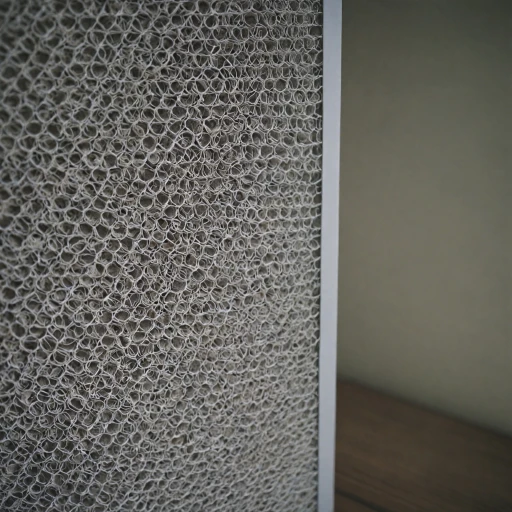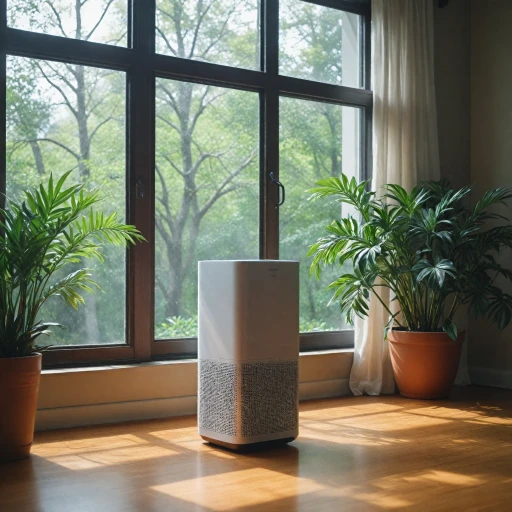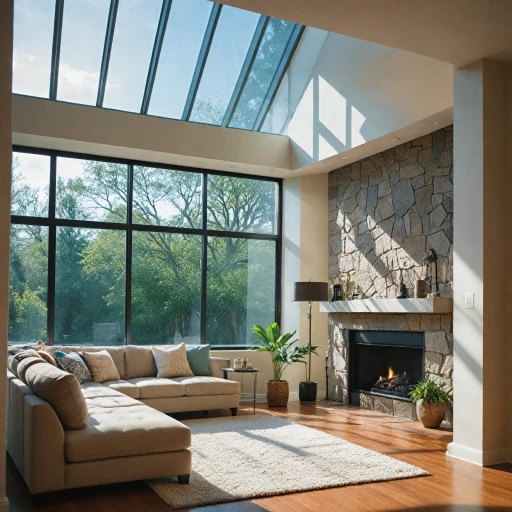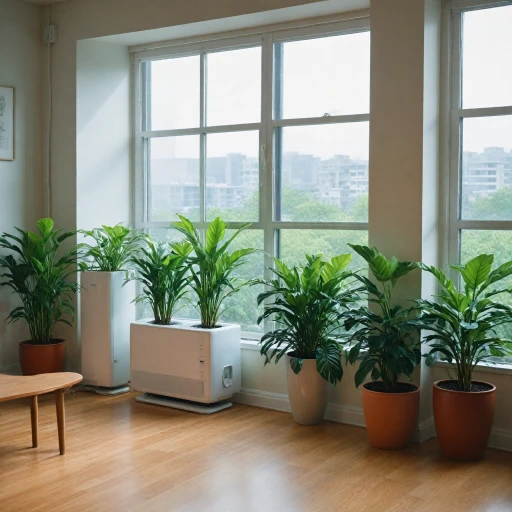How Ionic Breeze Air Filters Work
Unveiling the Mechanics of Ionic Breeze Air Filters
Ionic Breeze air filters have carved out a niche in the vast world of air purification technologies, positioned as a unique solution to indoor air quality issues. At the heart of an Ionic Breeze air purifier is its use of ionization technology, which makes it distinct from other filters like HEPA or ozone-based systems. Understanding how it operates is essential in evaluating its suitability for your needs. Ionic air purifiers work by emitting a continuous stream of negative ions into the air. These negative ions attach to airborne particles, such as dust, pollen, and smoke, causing them to become heavy and fall to the ground or be attracted to collection plates inside the device. This process does not require a fan, contributing to its reputation as a 'silent air' cleaner. A significant feature of Ionic Breeze purifiers, such as those from the Sharper Image brand, is that they do not use traditional filters. This sets them apart from HEPA air cleaners, which rely on mechanical filtration. Instead, the collection of pollutants is achieved through electrical charges, making maintenance simpler. Users often appreciate the low noise level and the small footprint, which are ideal for use in both large and small spaces. In a marketplace brimming with various air purifiers, the Ionic Breeze stands out for its silent operation and the promise of free shipping from certain retailers. While some may question the efficacy of negative ions compared to other methods, the affordable price point and ease of maintenance make it a popular choice for those seeking whisper-quiet air cleaning solutions. Moreover, these devices are seen as a plug-and-play convenience. Plug them in, and they quietly go to work without requiring constant attention. However, like any technology, it's crucial to weigh the advantages against potential drawbacks, including possible ozone emissions and the scope of their air cleaning effectiveness—a topic covered in more detail elsewhere. For those interested in exploring further, understanding the benefits of a whole-house air filtration UV system can provide a broader context for air purification options available today. In summary, Ionic Breeze air purifiers offer a distinctive approach to keeping your indoor air fresh and clean, standing firmly alongside other established technologies with their unique method of boosting air quality.Advantages of Using Ionic Breeze Air Filters
Key Benefits of Integrating an Ionic Breeze into Your Space
In your quest for healthier indoor air, one cannot overlook the advantages of an ionic breeze air filter. While numerous options like HEPA air purifiers are available on the market, let's delve into why choosing an ionic breeze might be the best decision for you.- Silent Operation: One remarkable feature of the ionic breeze is its quiet function. Unlike some HEPA air purifiers known for their noise, especially when running on higher settings, the ionic breeze works almost silently, enhancing your living or working environment without the distraction of constant noise.
- Energy Efficiency: Ionic air purifiers, including the renowned brand sharper image, are often noted for being energy-efficient. This efficiency means you'll enjoy improved air quality without a spike in your energy bills.
- Trapping Small Particles: Although they differ in their mechanism from HEPA filters, ionic breeze purifiers are still effective at reducing dust, pollen, and other small particles in the air, contributing to better air health and quality.
- Ozone Generation: While some debate surrounds the topic, many consumers appreciate the ionizer function for generating small amounts of ozone, which can aid in controlling odors and enhancing freshness. However, it's essential to consider ozone levels carefully if sensitivity is a concern.
- Free Shipping Offers: Opting for an ionic breeze often comes with enticing purchase conditions such as free shipping, which might be a deciding factor depending on the budgetary constraints.
Potential Drawbacks and Considerations
Considering the Downsides of Ionic Air Purifiers
While ionic breeze air purifiers, like those from Sharper Image, offer several benefits, it's crucial to consider some potential drawbacks and personal considerations before making a purchase.
- Ozone Emission: Ionic air purifiers work by releasing negative ions, which can lead to the production of ozone as a byproduct. In small amounts, ozone can help improve air freshness, but prolonged exposure may lead to respiratory issues for sensitive individuals.
- Ionizer Limitations: Unlike HEPA air filters, which physically capture airborne particles, ionizers rely on binding particles to surfaces. This process may not be as effective for all types of pollutants, impacting overall air quality.
- Maintenance Needs: Regular cleaning of surfaces where particles settle is necessary to maintain air cleanliness, potentially increasing the maintenance requirements compared to other purifiers.
- Noise Factor: Although marketed as silent air solutions, some users report quiet humming sounds, which may be a consideration for noise-sensitive environments.
- Higher Upfront Investment: Depending on the brand and model, ionic purifiers like the Ionic Breeze can come with a higher price tag, including shipping costs, compared to traditional plug-in or HEPA air purifiers.
Exploring other technologies like activated carbon filters can provide additional insights into achieving optimal indoor air quality. Learn more about activated carbon filter benefits.
Comparing Ionic Breeze with Other Air Purification Technologies
Contrasting Ionic Breeze with Other Air Purifiers
When considering air purifiers, it’s essential to compare the Ionic Breeze with other technologies available on the market. Each type of air purifier has its unique strengths and potential limitations. Understanding these differences can help you make an informed decision about which air purifier best suits your needs.
HEPA Filters vs. Ionic Breeze
HEPA filters are renowned for their ability to capture a high percentage of airborne particles, including dust, pollen, and pet dander. Unlike the ionic breeze, which uses negative ions to attract particles, HEPA filters physically trap particles in a dense filter. This can result in higher air quality in environments with significant particulate matter.
- Efficiency: HEPA filters are highly effective for removing particles but may not neutralize odors or gases as efficiently as some ionizers.
- Maintenance: HEPA filters require regular replacement, which can add to the overall price of maintenance.
- Noise Level: The silent air operation of the Ionic Breeze is often quieter compared to the fan-driven HEPA systems.
Ozone Generators vs. Ionic Breeze
Ozone generators are another type of air purifier that releases ozone to eliminate odors and kill mold and bacteria. However, the safety of ozone in indoor environments is a concern, as it can cause respiratory irritation.
- Air Freshening: While ozone generators can be effective as an air freshener, they may not be suitable for continuous use in occupied spaces.
- Health Considerations: The Ionic Breeze does not produce ozone at levels considered harmful, making it a safer choice for continuous use.
UV Air Purifiers vs. Ionic Breeze
UV air purifiers use ultraviolet light to destroy microorganisms in the air. They are particularly effective against bacteria and viruses but may not address particulate matter as effectively as other methods.
- Microbial Control: UV purifiers excel at killing germs but are often used in conjunction with other filtration systems to address all types of pollutants.
- Complementary Use: The Ionic Breeze can be used alongside UV systems to enhance overall indoor air quality.
In summary, while the Ionic Breeze offers a silent air solution with minimal maintenance, other technologies like HEPA and UV purifiers may provide additional benefits depending on your specific air quality needs. Evaluating these options can help you select the best air purifier for your home or office.
Tips for Choosing the Right Air Filter for Your Needs
Choosing the Right Ionic Breeze Air Filter
When selecting an Ionic Breeze air purifier, it's crucial to consider several factors to ensure you choose the best product for your needs. Here's a guide to help you make an informed decision:
- Room Size: Consider the size of the space where you plan to use the air purifier. Ionic Breeze models vary in capacity, so choose one that matches your room size for optimal air quality improvement.
- Noise Level: Ionic Breeze air purifiers are known for their silent air operation. If noise is a concern, prioritize models that emphasize quiet performance, especially for bedrooms or workspaces.
- Filter Type: While Ionic Breeze purifiers use ionizers, some models may include additional filtration methods like HEPA filters. Determine if you need a combination of technologies for enhanced air cleaning.
- Maintenance Requirements: Check how easy it is to clean and maintain the purifier. Some models may require regular filter replacements or cleaning to maintain efficiency.
- Price and Quality: Evaluate the price in relation to the features offered. Higher-priced models may offer better performance or additional features like ozone generation or negative ion emission.
- Brand Reputation: Consider purchasing from reputable brands like Sharper Image, known for their quality and customer service. This can be crucial for long-term satisfaction and support.
- Shipping and Warranty: Look for options with free shipping and a solid warranty to protect your investment. This can add value and peace of mind to your purchase.
By taking these factors into account, you can find an Ionic Breeze air purifier that meets your needs and enhances your indoor air quality effectively.
Maintenance and Care for Ionic Breeze Air Filters
Simple and Effective Maintenance
To ensure your ionic breeze air filter continues to deliver top-notch air quality, proper maintenance is essential.- Regular Cleaning: Clean the collector blades every few weeks. These blades attract dust and particles, which can accumulate over time. A damp cloth will usually do the trick, effectively removing buildup without harsh chemicals.
- Replacing Ionizing Wire: Depending on the use and model, you might need to replace the ionizing wire occasionally. This is crucial as the wire is responsible for generating the negative ions that purify indoor air.
- Inspecting for Damage: Regular inspection for any physical damage can help maintain the performance of your air ionizers. Cracks or broken parts could affect functionality.
- Filter Attention: Unlike HEPA air purifiers, sharper image ionic breeze models don't rely on traditional filters. However, if your unit includes a small activated carbon filter to reduce odors, ensure it is in good condition and replace it as needed.
- Check the Ozone Levels: Although ozone output from ionizers is generally low, it's wise to ensure your unit remains within safe limits to avoid any potential negative impacts.
- Plug and Power Source: Ensure that your ionic air purifier is plugged into a reliable power source, preventing unexpected shutdowns that could affect air cleaning efficiency.
